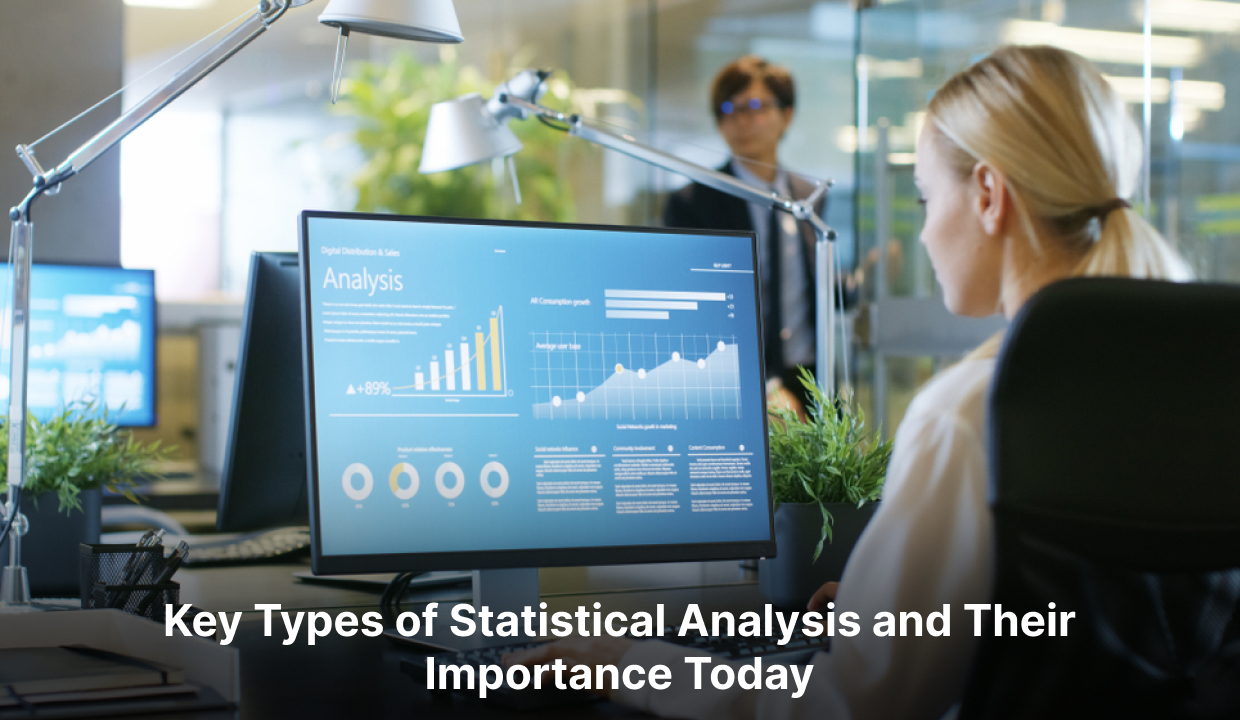Is SPSS the best Software to Prepare Statistical Models?

Contents
Introduction
Stats modelling is an integral aspect of data analysis in numerous fields ranging from academic to industrial environments, helping analysts and researchers interpret complex datasets, identify patterns and make more informed decisions. Various models are available for statistical analysis with unique benefits and drawbacks - one being SPSS Statistics, or SPSS for short. We examine its features to see whether it deserves to be called one of the top software for creating statistical models.
Understanding Statistical Modeling through Models
Before diving in and answering whether SPSS is the most efficient software to model statistics, we must define statistical modelling as a term and understand its function within society. A statistical modeller uses algorithms and mathematical techniques to develop models that describe connections amongst data elements for predictive purposes and gain insight into various occurrences. Compared with competing solutions like R, SPSS stands alone among similar programs regarding its statistical modelling abilities.
Models used for statistical analysis come in many varieties, from logistic regression and linear regression to deciduous trees or more sophisticated algorithmic machine learning networks such as neural networks. When choosing one for analysis or research purposes, your choice will ultimately depend on what information and objectives your investigation or study involves when you seek SPSS help.
SPSS Statistics has long been recognised as a market leader for statistical modelling and analysis since 1968 when Stanford University students first created it. It was later acquired by IBM in 2009. SPSS became highly esteemed thanks to its easy user experience and the comprehensive selection of statistical methods available through IBM's acquisition.
Here are a few essential components that have contributed to SPSS's success:
1.User-Friendly Interface
SPSS is widely recognised for its user-friendly and intuitive interface, making it accessible to individuals of all backgrounds with little knowledge of programming or statistics. Its Graphical User Interface (GUI) enables users to conduct statistical analyses efficiently - ideal for newcomers in this field and not experts.
2.Robust Statistical Procedures
SPSS provides an impressive variety of statistical methods that can be utilised for data analysis. They encompass advanced and basic techniques. Users may conduct hypothesis testing, descriptive statistics analysis and regression analyses, and cluster and factor analyses within one program environment - making SPSS perfect for use across various research applications.
3.Data Visualisation
Effective visualisation is central to both understanding and communicating statistical models. SPSS offers tools that make this easy by providing various graphs and charts for representing data as part of model results, which is especially helpful for communicating their message to non-technical audiences.
4.Interoperability between tools
SPSS integrates easily with other reporting and analysis tools for seamless data export and import, an essential feature when working with diverse data sources or with colleagues who use different software applications.
5.Support and Documents
SPSS users receive extensive guidance and documentation regarding, with manuals for end-users, tutorials, an active user group and a comprehensive support community available to users to navigate the program and work through any obstacles in their studies.
Assessing SPSS Strengths and Weaknesses
As part of the decision process to seek SPSS data analysis, we reviewed its strengths and shortcomings compared with those found in competing programs we have already considered.
1.Accessibility
One of SPSS's strengths lies in its accessibility, with its intuitive user interface and point-and-click features making it suitable for those unfamiliar with statistical modelling or those unwilling to write programs themselves.
2.Comprehensive Procedures
SPSS features an impressive variety of statistical techniques, making it suitable for many research applications ranging from descriptive statistics to advanced modelling techniques.
3.Data Visualisation
This software gives users tools for creating attractive data visualisations - essential when conveying information effectively.
Support and Documents
SPSS provides customers with comprehensive support and documentation tools designed to assist when assistance is required.
1.Cost
SPSS is proprietary software that requires licensing fees that may prove prohibitively costly for individual users and small businesses, creating barriers for many potential adopters of this tool.
2.Limited Automation
Although SPSS is user-friendly, its limited options may not make it the optimal tool for automating intricate data analyses. Users looking for greater automation may find R or Python more suited.
3.Flexible but Limited
Though SPSS contains many statistical techniques, it lacks the capacity for handling more advanced or specialised methods as quickly as other open-source platforms such as R.
4.Closed Source
As an inaccessible program, SPSS lacks the transparency and flexibility offered by open-source alternatives; users do not have control over its internal workings.
Why choose SPSS as your software of choice?
SPSS stands as an influential choice among modelling and statistical software, making it suitable for specific situations. Here are three situations when this software could prove invaluable:
1.Beginner-Friendly
SPSS's user-friendly interface will drastically reduce the learning time needed.
2.Social Sciences Research
SPSS was developed primarily to conduct social science research. If your work specialises in this discipline, SPSS might be your go-to solution.
3.Quick Analysis of Data
When conducting analyses independently or creating basic descriptive statistics with SPSS's user-friendly point-and-click interface, saving time with SPSS will become more straightforward.
4.Collaborative Work
When working collaboratively, using SPSS could simplify life by maintaining consistency among all participants involved in the program to ensure uniform results.
When is an appropriate time for alternative solutions to be considered?
Although SPSS is valuable, in certain situations, other statistical modelling tools could prove more efficient:
1.Advanced Analysis
For advanced statistical methods like machine learning or modelling specialisation, open-source options like R or Python offer greater versatility in software applications available for analysis.
2.Cost Constraints
Individuals, small businesses, and those operating with tight budgets may find the price of SPSS licences prohibitively costly; open-source software like R and Python offer cost-efficient alternatives as a cost-cutting measure.
3.Automating Data Science Automation
Python may be your ideal solution if your data science work involves extensive automation, scripting and integration between applications - its flexibility makes it the go-to language in these cases.
4.Flexible and Transparent
Researchers who wish to have complete control of their analysis process and tailor every model element may find open-source tools like R or Python more suitable than proprietary solutions for doing this task.
Conclusion
SPSS may or may not be an optimal software for creating statistical models; that depends on your needs and personal preferences. Its user-friendly interface, comprehensive selection of statistical techniques, and exceptional customer support service make SPSS an appealing choice for many individuals involved with social sciences research or those new to statistical analysis alike willing to seek assistance with SPSS assignments.
At first glance, software for statistical modelling presents many choices; each offers distinct features and tailors itself specifically to users' and researchers' requirements. R, Python, SAS and Stata, among many others, provide solutions suitable to different user types and research needs; those seeking cheaper open-source alternatives might find a better fit with specific needs or budgetary concerns.
Great software for statistical modelling should fit your needs, knowledge base and budget. Before selecting one option over another, we must consider its strengths, functions and drawbacks, as they all can bring insight to data analysis, providing actionable intelligence when conducting studies or running businesses. No matter which option we opt for, we should always harness statistics' power models for insight through data and to make wiser business decisions when conducting studies or doing studies.
Submit a Comment
Your email address will not be published. Required fields are marked *
Recent Posts








Comments(0)